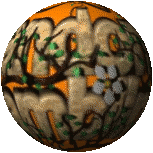Houses this year are very popular. Both the Mason and the Leaf-cutter bees have practically filled up all of the vacancies and there have been very few homes left empty and as yet, apart from some being obviously too narrow or too wide, I have not been able to find out why the remaining homes, which look perfect from the outside are left and not taken up some years.
The bees appeared to be keener than ever this year to increase their numbers and they moved with amazing alacrity to fill as many suitable crevices within both the wooden Insect tenements. First the Mason bees had their pick and packed the tube houses with mud – then just before they had finished possessing as many properties as they were able, the slightly larger Leaf-cutter bees shook themselves about and proceeded to claim all of the remaining suitable vacancies. Never have I seen such an array of colours and materials being stuffed into the entrances to make the front doors secure.

This shows the variety of materials used to seal the front doors of each of the compartments. You can see the mud or clay used by the Mason bees as well as the large variety and colours of the leaves used by the Leaf-cutter bees.


































































































